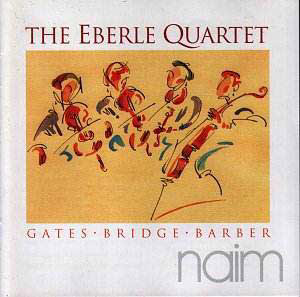 Composer: Edvard Grieg
Composer: Edvard Grieg
Works: Lyric Pieces (Selected) – op.12 no.1 Arietta; op.38 no.1 Berceuse; op.43 no.1 Butterfly; op.43 no.2 Solitary wanderer; op.43 no.6 To Springtime; op.47 no.2 Album page; op.47 no.3 Melodie; op.47 no.4 Norwegian Dance Halling; op.54 no.1 Shepherd boy; op.54 no.3 March of the dwarfs; op.54 no.4 Notturno; op.54 no.5 Scherzo; op.57 no.6 Homesick; op.62 no.4 Brooklet; op.62 no.6 Homewards; op.65 no.5 Ballad; op.65 no.6 Wedding day at Troldhaugen; op.68 no.2 Grandmother’s minuet; op.68 no.3 At your feet; op.68 no.5 At the cradle; op.71 no.1 Once upon a time; op.71 no.2 Summer evening; op.71 no.3 Puck; op.71 no.4 Peace of the woods; op.71 no.6 Gone; op.71 no.7 Remembrances
Performers: Håken Austbø, piano
Recording: Summer 2001
Label: REGIS RRC 1071
Edvard Grieg’s Lyric Pieces stand as quintessential representations of late Romantic piano music, encapsulating the essence of Norwegian folk melodies while simultaneously transcending national boundaries through their universal emotional resonance. Composed between 1867 and 1901, these short pieces were not merely exercises in sentimentality but rather profound explorations of mood, memory, and nature, reflecting Grieg’s deep connection to his homeland and his mastery of miniature forms. The selected works presented here reveal both the breadth and depth of his compositional voice, ranging from the introspective beauty of “Arietta” to the spirited exuberance of “Halling.”
Håken Austbø’s interpretation of these pieces is both sensitive and insightful, showcasing his nuanced understanding of Grieg’s idiomatic writing. Notably, his approach to Melodie, op. 47 no. 3, exemplifies the delicate balance between melancholy and strength that is so characteristic of Grieg’s style. Austbø captures the wistful nature of the melody with a lyrical fluidity, maintaining a tempo that allows for both expressiveness and clarity. His ability to articulate the harmonic nuances in this work—particularly in the way he emphasizes the dissonances—reveals a keen interpretative intelligence that elevates the performance beyond mere technical proficiency.
The recording quality of this release is commendable, with a clarity that allows the listener to appreciate the subtleties of Austbø’s touch. The engineering captures the piano’s resonance beautifully, providing a sense of space that enhances the music’s inherent lyricism. Each piece is rendered with a distinct character, and the contrasts between the more vigorous pieces, such as “March of the Dwarfs,” and the introspective ones are expertly navigated. The rhythmic drive of “March of the Dwarfs” showcases Austbø’s ability to infuse energy while maintaining the music’s playful essence, a testament to his technical skill and interpretative acumen.
Comparisons to other notable recordings, such as those by Gilels and Andsnes, highlight Austbø’s distinctive interpretative choices. While Gilels offers a more grandiose reading, often leaning into a heavier touch, Austbø’s lighter, more agile approach provides a refreshing perspective on these beloved miniatures. His phrasing often brings to light the folk influences within Grieg’s music, creating a dialogue between the composed and the spontaneous that resonates deeply within the listener.
The selection of pieces, spanning over three decades of Grieg’s output, illustrates the composer’s evolving voice while simultaneously showcasing Austbø’s versatility. Each piece feels carefully curated, offering a cohesive journey through Grieg’s emotional landscape. The final track, “Remembrances,” serves as a poignant closure, resonating with a sense of nostalgia that lingers long after the last note fades.
Austbø’s performance is a remarkable achievement, embodying the essence of Grieg’s Lyric Pieces with both technical prowess and interpretative depth. His commitment to the music, coupled with the superb recording quality, makes this release not only a valuable addition to any Grieg enthusiast’s collection but also a compelling invitation for new listeners to explore the beauty of these miniature masterpieces.



